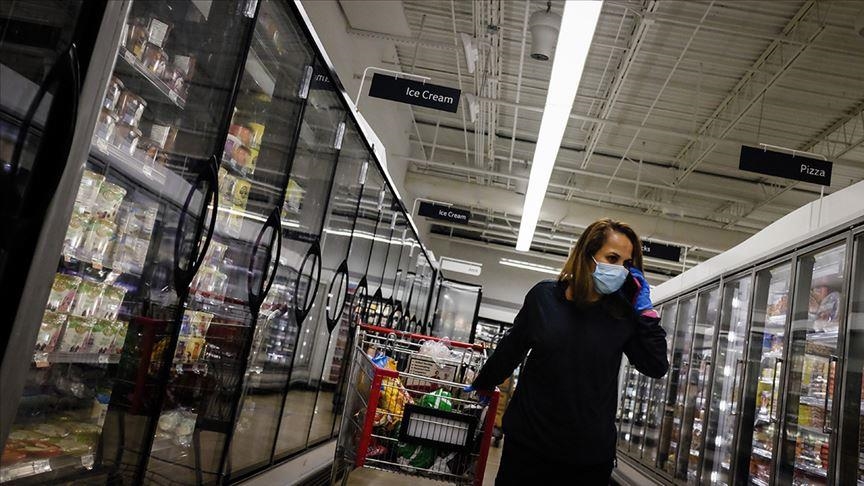
WASHINGTON
While the rise in food prices, which has been accelerated by the coronavirus pandemic, reached its highest level since 2011 in the US, it continues to fuel inflation in the country.
According to the latest data from the US Bureau of Labor Statistics on Wednesday, the consumer price index (CPI) in September climbed 5.4% from the same period of last year, hitting a 13-year high.
Energy and food made the largest contribution to the rise – 24.8% and 4.6%, respectively.
The annual surge in food inflation has been the highest since December 2011 with the largest increase was from the index for meats, poultry, fish, and eggs with 10.5% as the index for beef rose 17.6% over the year.
The consumer prices for pork went up by 12.7%, poultry by 6.1%, and fish and seafood by 7.1% during the same period. The figure jumped by 12.6% in the eggs prices index.
This sub-index was followed by nonalcoholic beverages with 3.7%, other food at home with 3.1%, fruits and vegetables with 3%, cereals and bakery products with 2.7, and dairy and related products with 0.6%.
Analysts say that the rise in inflation may continue in the forthcoming months with the upward trend in energy prices, which challenges the US Federal Reserve's (Fed) view that high inflation is temporary.
Temporary upward pressure on inflation has come from supply chain bottlenecks, the Fed said, however, analysts warned that the situation is worsening and is unlikely to improve any time soon.
Rising inflation reflects pandemic-related supply-demand mismatches and higher commodity prices compared to their low base from a year ago, the International Monetary Fund (IMF) said in its World Economic Outlook on Tuesday.
Pointing to the upside inflation risks, the report said the monetary policy may need to be tightened to get ahead of price pressures.
"The high inflation is the result of the pandemic, and most recently the Delta wave of the pandemic, which has further scrambled global supply chains, resulting in broad-based shortages and higher prices," Mark Zandi, chief economist of Moody's Analytics, told Anadolu Agency.
The job market has also been disrupted, Zandi underlined, adding that this contributes to higher labor costs and shortages which results in higher prices.
Noting that the higher inflation will prove temporary, Zandi said: "As the pandemic winds down, the supply chain and labor market problems will be ironed out, and inflation will moderate."
"By this time next year, I expect inflation to be closing in on the Fed’s target of just over 2%."
It is encouraging, Zandi suggested, that inflation expectations remain low and stable, adding that high inflation will not persist if inflation expectations remain low.
"I expect CPI inflation to slow from its current just over 5% to closer to about half that by late next year or early 2023," Zandi stated.
Anadolu Agency website contains only a portion of the news stories offered to subscribers in the AA News Broadcasting System (HAS), and in summarized form. Please contact us for subscription options.



